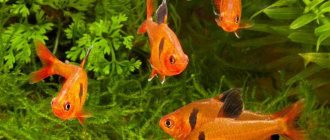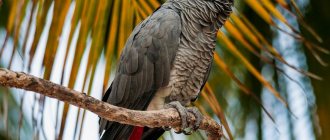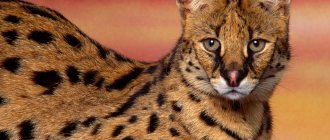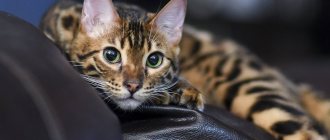In large aquariums, aquarists most often keep large cichlids and catfish. Among large catfish, Pterygoplicht brocade (lat. Pterygoplichthys
gibbiceps
). This beautiful catfish belongs to the ringed catfish family.
In nature, pterygoplichts live in South America: in the Amazon, Orinoco, and the Brazilian rivers Xingu and Tefe. There they live in shallow waters where there is almost no current. They can gather in large flocks. During the wet season, their appetite increases. At this time, catfish eat plants and carrion. During drought, pterygoplichthys burrow into moist silt and hibernate. This is how they survive unfavorable natural conditions.
Description and behavior
The natural habitat for Pterygoplichthus is the shallows of the Orinoco and Amazon rivers. These areas tend to have slow currents and the rainy season floods the land for short periods of time.
The aquarium brocade catfish, or pterygoplicht, can grow up to 50 cm in length. It is difficult to confuse it with any other fish due to its characteristic appearance. You can recognize a catfish by the following signs:
- The entire body of pterygoplicht is covered with brown spots, which are separated by white or yellow veins.
- The body of the fish is elongated, and the head is large.
- On the back, the body is covered with bone plates; they are absent on the stomach.
- The eyes are small and located high on the head. Protruding nostrils are characteristic.
- The mouth has powerful suction cups with which the catfish can attach itself to the glass of the aquarium.
- The back of Pterygoplicht is decorated with a dorsal fin consisting of 12-13 rays. The fin length can reach 15 cm.
- There is a ridge on the back in front of the fin.
- The tail and pectoral fins are lush and beautiful.
These fish have well-developed oral suckers, thanks to which they can stick to vertical surfaces.
Brocade pterygoplichts are very warlike, like most chain-mail catfishes. Adult males can get involved in fights with members of their own species. During a fight, they menacingly straighten their pectoral fins, which allows them to visually increase in size. It can be very difficult for even a large predator to attack such a catfish.
Under natural conditions, the life cycle of brocade catfish depends on the season of the year. When drought sets in, they hibernate, burrowing into the mud. With the onset of the rainy season, catfish become more active. If you take a catfish out of the water, it begins to hiss. According to biologists, in this way the fish seeks to scare away attacking predators.
Brocade pterygoplichtas are popular fish for aquariums due to their interesting color and appearance.
Aquarium Basics
In nature, Pterygoplichtas live up to 30 years. When creating comfortable conditions in captivity, the fish delight observers of up to 15-20.
Aquarium
Pterygoplicht grows in natural conditions up to 80 cm, in an aquarium up to 50-55 cm, so a container of more than 400 liters is chosen, at the rate of 300 liters per pair. Filtering equipment is also installed for water aeration. Select light soil and crushed pebbles. Shelters and caves for daytime rest are created from stones and driftwood.
Water
25% of the fluid is changed every week. Suitable temperature +23…+27 °C, permissible hardness up to 15 °dH, acidity pH 6.5-7.5.
landscaping
Plants with strong roots are planted: Echinodorus, Cryptocoryne, Aponogeton. Deepen into the ground and secure with pebbles. Algae with a weak root system are planted in pots that are covered with a net. This will prevent Pterygoplichts from digging up their roots. They choose vegetation with large leaves, behind which the catfish hide.
Lighting
Pterygoplicht cleans the aquarium at dusk and at night; during the day it hides in shelters made of stones and driftwood, so there are no special requirements for the level of illumination.
Compatibility
Conflicts of interest arise among Pterygoplichts due to territories and food supply. Defending the boundaries of their habitat, calm Brocade catfish show aggression towards their relatives.
They compete with cleaner fish such as Gyrinocheilus and Ancistrus.
Pterygoplichths causes damage to veiled fish or scaleless fish (sac-branch catfish). Slow-moving goldfish, discus and angelfish are left without scales after Pterygoplicht's nightly meals.
In a spacious aquarium, the Brocade Catfish gets along with the intelligent Flower Horn (red dragon), whose aggressiveness is exaggerated.
They place small inhabitants near Pterygoplichthus near overgrown algae thickets.
It is recommended to combine large fish with Brocade catfish:
- polypterus;
- knife fish;
- large cichlids;
- giant gouramis;
- betta fish.
Decor
When setting up an aquarium, you must place driftwood at the bottom. The catfish scrapes off growths and woody particles containing cellulose, which is necessary for proper digestion.
The soil chosen is simple: pebbles, small stones. You can build grottoes from large stones.
Feeding of the brocade catfish
The diet of pterygoplicht must be varied. In the daily menu, animal feed should make up 20-25%, and plant food 75-80%. Suitable herbal products:
- lettuce leaves scalded with boiling water;
- zucchini, zucchini;
- cucumbers;
- carrot;
- spinach;
- cabbage.
These vegetables can be combined with special foods that are sold in pet stores. In this way, you can create an optimal diet for pterygoplicht. Frozen seafood, bloodworms or worms can be used as live food.
Most often they stay in shallow areas of rivers with weak currents, as well as in flooded areas during the rainy season.
You should not overfeed the catfish, otherwise they will stop cleaning the algae in the aquarium. Since Pterygoplicht prefers to be nocturnal, it is better to feed it in the evening before turning off the lights. These fish are quite slow and may miss the moment of feeding. It is very important that the fish have a reliable shelter for daytime rest. Here he will be able to hide from his relatives and from other inhabitants of the aquarium.
Habitat in nature
Habitat: Brazil, Ecuador, Peru and Venezuela. Brocade pterygoplichthus lives in the Amazon, Orinoco and their tributaries. During the rainy season it moves to flooded areas.
In slow-flowing rivers they can form large groups and feed together.
During the dry season, it digs long (up to a meter) holes in river banks, where it waits out the dry season. The fry are raised in these same burrows.
The name comes from the Latin gibbus - hump, and caput - head.
Compatibility with other types
The “neighbors” of the brocade catfish in the aquarium can only be individuals as large as itself. The following species can be settled in the same reservoir with Pterygoplichthus:
- large cichlids;
- knife fish;
- large gourami;
- polypterae;
- flower horn.
It is not recommended to place pterygofir with angelfish in the same aquarium.
The latter usually destroys all its “neighbors” in the aquarium, but the brocade catfish is protected by its bone armor.
It is not recommended to place pterygofir in the same aquarium with the following breeds:
- discus and angelfish - the catfish will eat their scales;
- goldfish - they are very slow and can be attacked;
- scaleless fish such as the sacbranch catfish;
- breeds of fish with veiled tails and fins;
- other cleaners - ancistrus, etc.
Intraspecific aggression is often observed in brocade catfishes, so there should not be more than one adult pair of this species in one aquarium.
You can place pterygoplichts with large cichlids in the same pond.
Content complexity
Brocade catfish can be kept with various fish, as its character is peaceful. They can be aggressive and territorial towards other birds if they were not raised together.
Pterygoplicht needs a spacious aquarium, at least 400 liters per adult pair. It is necessary to place driftwood in the aquarium so that they can scrape off fouling from them, the main source of food for the brocade catfish.
They also absorb cellulose by scraping it from driftwood, which they need for normal digestion.
Brocade catfish is a nocturnal fish, so if you feed it, it is better to do it at night, shortly before turning off the lights.
Please note that although they primarily eat plant matter, catfish are also scavengers in nature. In an aquarium, they can eat the scales on the sides of discus and angelfish at night, so you should not keep them with flat and slow fish.
Fish reproduction
In their homeland, pterygoplichthys go into deep burrows and tunnels dug near the river bank during the breeding season. The female hides in such a hole and lays eggs, while the male guards the entrance. After the fry are born, the males take full charge of caring for them.
It is impossible to create such conditions in a home aquarium, so it will not be possible to propagate the brocade catfish at home. An adult couple living together in the same aquarium will not lead to offspring.
For breeding brocade catfish, special farms are built in East Asia, Australia and the USA. Here the fish are grown for commercial purposes - they are transported to pet stores all over the world, since Pterygoplichthus is incredibly popular.
The plates covering the body of the catfish are especially clearly visible in albino forms.
Diseases
Pterochlitus very rarely gets sick. If the disease occurs, the main reasons are:
- increasing the level of organic matter in water;
- the absence of driftwood, the description was given above (they help with digestion);
- the appearance of ciliates.
Ciliates, the size of which is no more than 1 mm, appear in the aquarium and cause the disease ichthyophthyrosis. They penetrate the fins and gills of their prey. Because of this, the fish weakens, loses appetite, often swims to the surface and gradually dies from suffocation. If you can identify the first signs of the disease, you need to take the fish to a veterinary hospital. Sometimes it helps to cure fish by placing them in salt water or water heated to 30⁰C. If the disease has not disappeared, then it is better to buy special medications.
Aquarium
To keep one individual you will need a container of 200 liters, for a pair of fish - from 300 liters.
They prefer to spend daytime in shelters - caves made of stones, ceramic or plastic pipes, artificial grottoes.
The presence of driftwood made of natural wood is required. The cellulose contained in the tree is vital for normal digestion. The soil should be smooth and not coarse so that the fish do not get hurt.
From plants it is better to select strong and well-rooted species: echinodorus, cryptocorynes, aponogetons, vallisneria. Their roots are covered with stones so that the bird does not dig them up.
Water parameters:
Temperature: 23 - 27°C pH: 6.0 - 8.0 Hardness: 5 - 19°dGH
Aeration with filtration is required, it is advisable to create a light flow. Water changes should be done weekly.
Contagious diseases
The enclosed space of the aquarium creates favorable conditions for the reproduction of ciliated ciliates. Therefore, upon detecting the first signs of the disease, the sick fish must be isolated. Some aquarium fish owners treat them by placing them in salt water, or by heating the water to 30 degrees Celsius. Sometimes this helps, but it is best to take the sick catfish to the veterinarian, where it can be treated with special medications.
The aquarium catfish Pterygoplicht brocade will be a good decoration for your home pond if you care for it properly.










